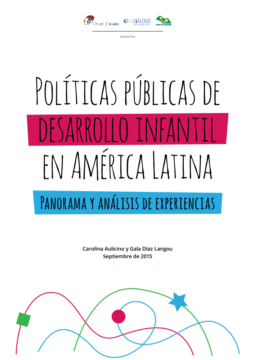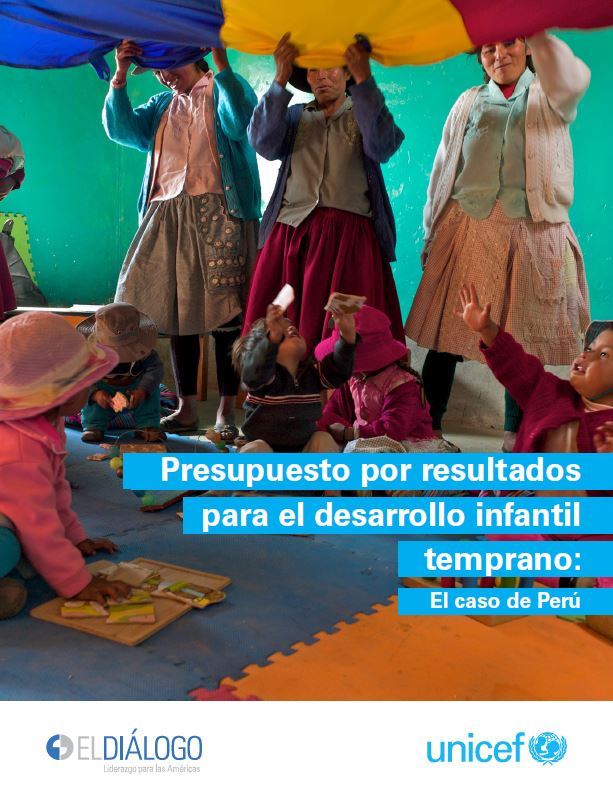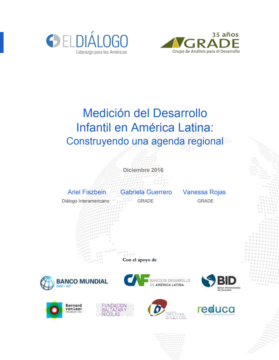
An Agenda for Early Childhood Development
Early childhood development is one of the investments with the highest returns and allows us to achieve, simultaneously, equity and efficiency objectives.
This post is also available in: Español
The following report is only available in Spanish. This report was published in coordination with UNICEF.
Many studies point to the importance of investing in early childhood – the experiences and learning that take place during this critical period of a child’s life largely determine their future development. However, due to the situations of poverty and vulnerability that many families in Latin America face, many children do not receive the care, nutrition, health, and safe and welcoming environments they need to realize their full potential.
In recent years, countries in the region have devoted more effort and resources to expand coverage and strengthen the quality of services provided to families and children under the age of five. Together, the Inter-American Dialogue, UNICEF – Office of Latin America and the Caribbean and Atipay, Innovación para la Gestión seek to identify and promote those comprehensive early childhood development policies that have been effective because of the high level of coordination and communication between the various sectors involved. The objective of this collaboration is to systematize case studies on effective policies that have already been implemented, and thus promote best practices based on lessons learned.
The following is the case of Peru, which details a policy-making process for early childhood development with particular characteristics that are of interest to the Regional Agenda for Early Childhood Development. Based on a comprehensive, multi-sector agreement Peru established national objectives for Early Childhood Development and initiated an evidence-based policy design process. Within this design process, Peru determined which interventions were most likely to result in the desired outcomes for early childhood development.
The case of Peru is an example of the use of a multi-sectoral Results-Based Budgeting (PpR in Spanish) approach. This example stands out for its cross-sectoral coordination in planning, as well as for its development of tools for implementing coordinated, multi-sectoral objectives. This PpR approach explicitly links public policy objectives and instruments with the budget and the integrated management of services.
The main challenge is to transition from the planning phase to program implementation. It is difficult to design a policy that ensures the formulation of a budget and the allocation of products in order to achieve adequate provision of services. In Peru, it was observed that budget programs oriented towards results (known in Spanish as PPoR) for early childhood development (ECD) require significantly greater efforts and commitment compared to similar programs previously implemented, such as the plan for chronic malnutrition reduction.
Due to its complexity and dynamics, ECD requires a well-articulated and synchronized response across different government and public administration agencies. While this report has been structured to respond to public problems in a sectoral and fragmented manner, Peru's experience with reducing chronic malnutrition shows that it is possible to have more coordinated and focused responses.
A major challenge in implementing these programs is political shifts, which create instability and breakdowns in innovation, as well as reform processes in policy and public management. Due to this challenge, the report found that a qualified and vision-focused technocracy is necessary to continue implementing this program in Peru, regardless of who has political control.
Early childhood development is one of the investments with the highest returns and allows us to achieve, simultaneously, equity and efficiency objectives.
Measuring early childhood development (ECD) at the national level is crucial for informing policy-making and for evaluating ECD programs in Latin America.
La importancia de los primeros años de vida sobre la formación del capital humano es ampliamente reconocida. ¿Cómo podemos asegurar una oferta de servicios de calidad?


